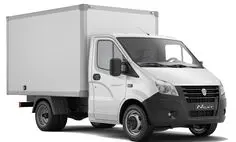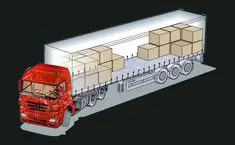
Navigating Global Commerce: The Dynamics of Cargo Movement
- Admin
Cargo movement serves as the lifeblood of international trade, facilitating the exchange of goods between producers, consumers, and markets worldwide. From raw materials to finished products, cargo traverses complex supply chains, transportation networks, and trade routes, connecting economies and driving economic growth. In this article, we delve into the intricacies of cargo movement, exploring key modes of transportation, challenges, and innovations shaping the future of global logistics.
The Significance of Cargo Movement
Cargo movement is fundamental to the functioning of global commerce, enabling businesses to access markets, source inputs, and deliver products to customers efficiently. Whether transported by air, sea, rail, or road, cargo represents the tangible goods that underpin economic activity, trade, and consumer consumption. Efficient cargo movement ensures that goods reach their intended destinations in a timely, cost-effective manner, supporting supply chain resilience and competitiveness in the global marketplace.
Key Modes of Transportation
Cargo movement relies on various modes of transportation to move goods across different distances and geographic regions:
Maritime Transportation: Maritime transportation, including container shipping, bulk carriers, and tankers, dominates international cargo movement, transporting the majority of the world's goods across oceans and seas. Containerization revolutionized maritime trade, enabling efficient handling, storage, and transportation of goods in standardized containers.
Air Transportation: Air transportation provides fast, reliable connectivity for high-value, time-sensitive cargo, including perishable goods, electronics, and pharmaceuticals. Air cargo operations rely on dedicated freighter aircraft and belly space on passenger flights to transport goods quickly and efficiently between continents.
Rail Transportation: Rail transportation plays a crucial role in transporting bulk cargo and intermodal containers over land, connecting production centers, distribution hubs, and ports. Rail freight offers cost-effective, energy-efficient transportation solutions for goods such as coal, minerals, and manufactured products.
Road Transportation: Road transportation, including trucks and lorries, provides flexible, door-to-door service for local and regional cargo movement. Trucks transport a wide range of goods, including consumer goods, agricultural products, and industrial materials, supporting urban and rural distribution networks.
Challenges in Cargo Movement
Cargo movement faces several challenges that impact logistics efficiency, reliability, and cost:
Infrastructure Constraints: Infrastructure constraints, such as congestion, capacity limitations, and inadequate transportation networks, can impede cargo movement and increase transportation costs. Improving infrastructure, investing in transportation upgrades, and implementing technology solutions are essential for addressing infrastructure challenges.
Regulatory Compliance: Regulatory compliance, including customs clearance procedures, import/export regulations, and trade agreements, varies across countries and regions, creating complexities and delays in cargo movement. Streamlining customs procedures, harmonizing regulations, and leveraging trade facilitation initiatives can enhance efficiency and reduce trade barriers.
Supply Chain Disruptions: Supply chain disruptions, such as natural disasters, geopolitical conflicts, and global pandemics, can disrupt cargo movement and impact supply chain resilience. Building resilient supply chains, implementing risk mitigation strategies, and diversifying transportation routes and suppliers are essential for mitigating supply chain risks.
Innovations in Cargo Movement
Innovations in technology and logistics are transforming cargo movement operations, enhancing efficiency, visibility, and sustainability:
Digitalization: Digitalization and automation technologies, such as Internet of Things (IoT), blockchain, and artificial intelligence (AI), are revolutionizing cargo tracking, documentation, and communication. Digital platforms enable real-time visibility into cargo movements, streamline documentation processes, and improve collaboration across supply chain stakeholders.
Green Logistics: Green logistics initiatives, including alternative fuels, eco-friendly transportation modes, and emission reduction measures, are promoting sustainability in cargo movement operations. Electric vehicles, biofuels, and sustainable packaging solutions help reduce carbon emissions and environmental impact in logistics operations.
Intermodal Transportation: Intermodal transportation integrates multiple modes of transportation, such as rail, road, and sea, to optimize cargo movement and reduce transportation costs. Intermodal terminals and hubs facilitate seamless transfers between transportation modes, improving efficiency and flexibility in supply chain logistics.
Conclusion
Cargo movement is the lifeblood of global commerce, enabling the exchange of goods and driving economic growth and development. By leveraging diverse transportation modes, addressing infrastructure challenges, and embracing innovations in technology and sustainability, businesses can optimize cargo movement operations, enhance supply chain efficiency, and remain competitive in the global marketplace. As we navigate the complexities of cargo movement in the 21st century, collaboration, innovation, and resilience are essential for building a more efficient, sustainable, and connected logistics ecosystem.
